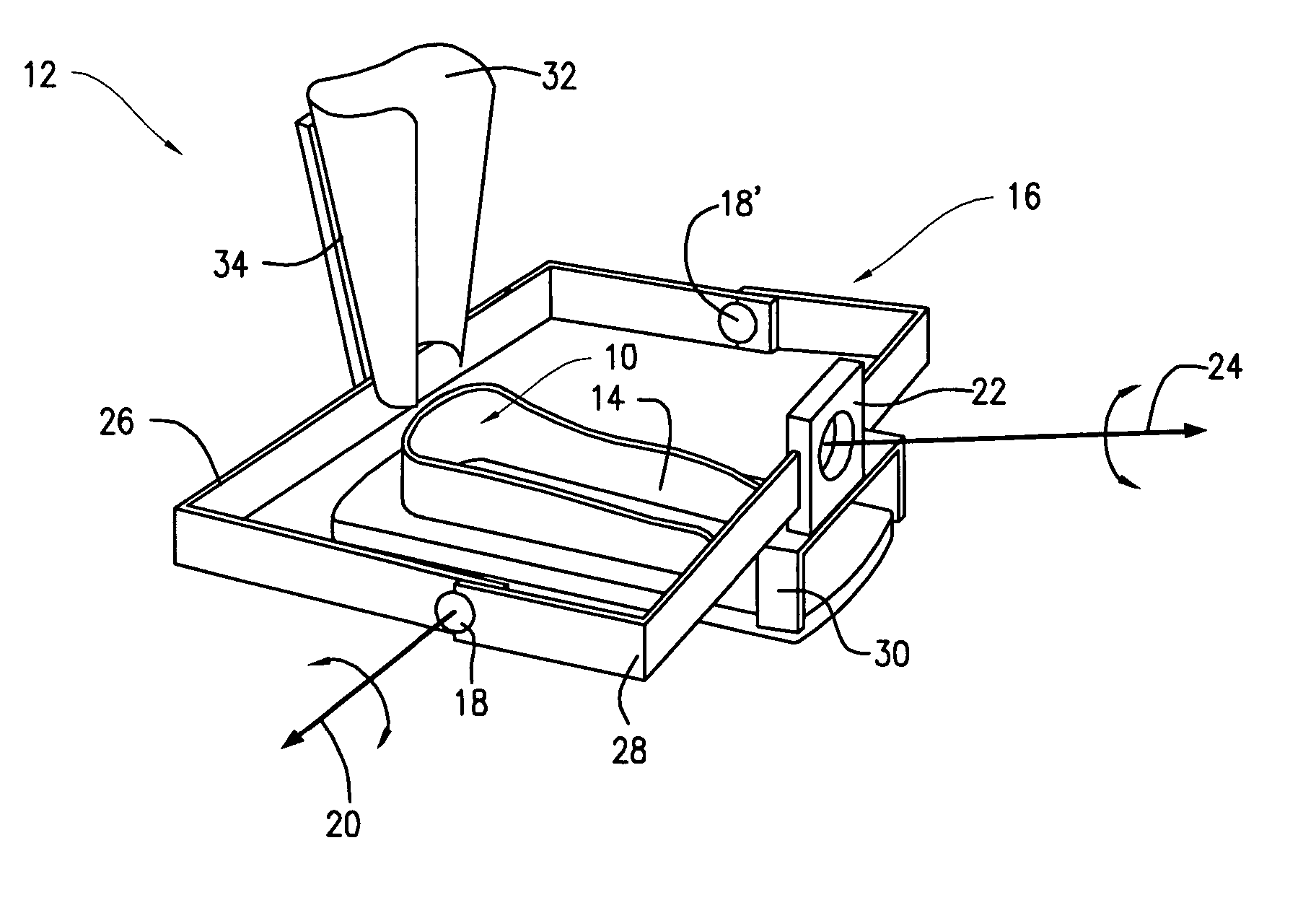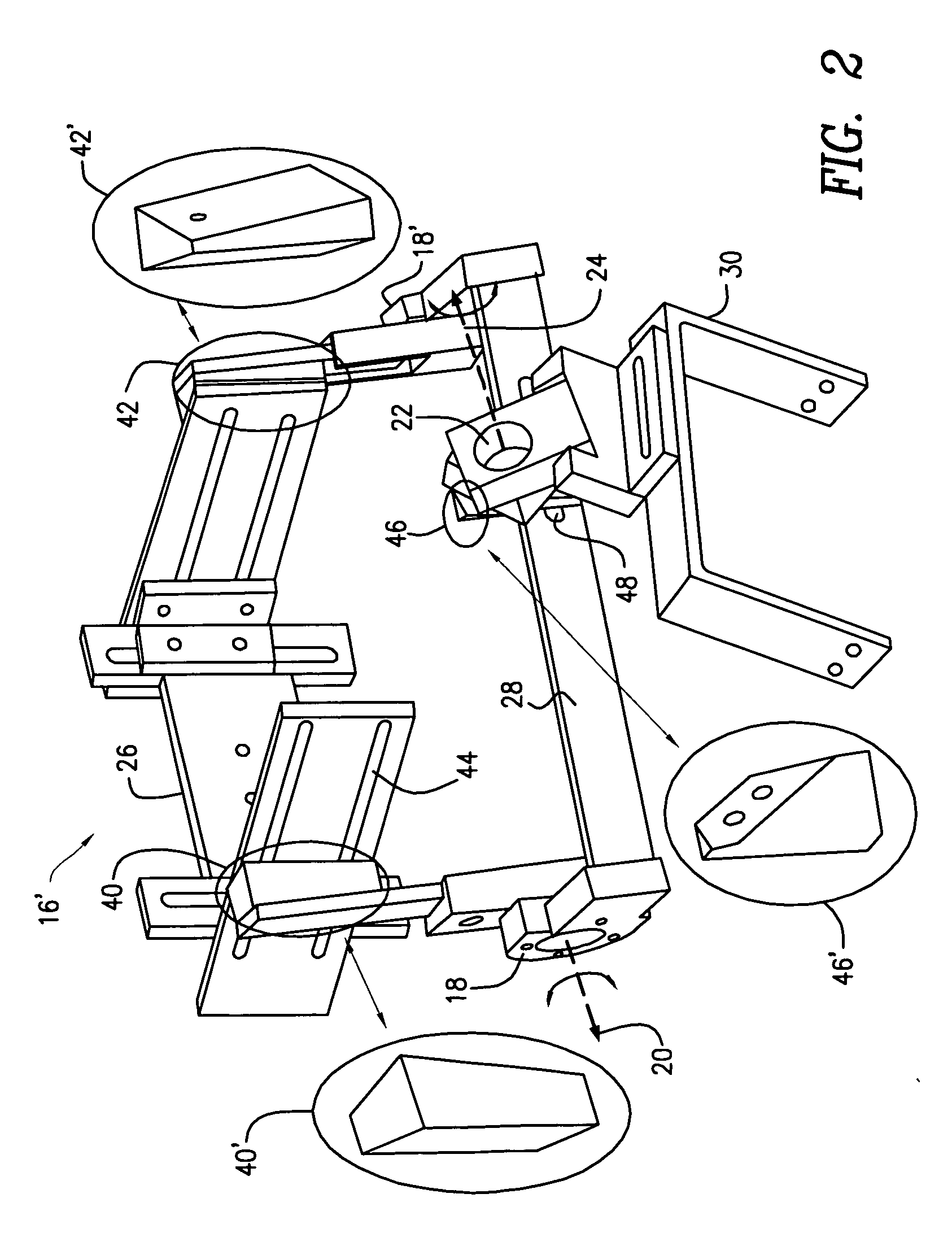Ankle-foot orthosis device
a technology for ankles and feet, applied in chiropractic devices, medical science, physical therapy, etc., can solve problems such as inability to achieve dorsiflexion assist moments, inability to bend the knee,
- Summary
- Abstract
- Description
- Claims
- Application Information
AI Technical Summary
Benefits of technology
Problems solved by technology
Method used
Image
Examples
example 1
Kinematics Model for Ankle-Foot Motion
[0039] In this example, the motion of the ankle is modeled based on two degrees-of-freedom. The first degree-of-freedom is a rotation in the vertical plane about an axis (Z1) passing through the ankle joint. This axis is known as the dorsiflexion-plantarflexion (D / P) motion axis. The second degree-of-freedom is a rotation about an axis (Z2). This motion is known as inversion-eversion (I / E) motion. For this model, segments of the foot are assumed to be rigid links, and the dorsiflexion-plantarflexion and inversion-eversion motions are approximated by revolute joints.
[0040] The orientations of the two joint axes considered in this study are shown in FIG. 6, which shows the projection of the joint axes in the frame attached to the leg shank (X0, Y0, Z0). The axis Z0 represents the knee joint axis. This projection is taken when the foot is resting firmly on the ground and the leg is perpendicular to the ground.
[0041] The Denavit-Hartenberg (DH) ...
example 2
Measuring Forces and Torques Applied at the Dorsalflexion-Plantarflexion and Inversion-Eversion Joints
[0044] In measuring the forces and torques at the revolute joints of the orthosis, a Newton-Euler analysis can be used to convert the raw force-torque sensor and encorder data into joint forces and torques. When using telescopic joints on the orthosis, the device can be adjusted to allow the axes of the device to coincide with the axes of the human motion. The device then moves largely synchronously with little or no relative motion compared to the subject's ankle and foot. The device can be adjusted until the subject is able to execute the normal motion of the foot. Perfect alignment between the human and device axes can be difficult, but there are several techniques to facilitate adequate agreement. The device and the subject's ankle and foot are kept largely fixed.
[0045] The free body diagram shown in FIG. 7 illustrates five bodies contributing to this kinematics model. The fi...
example 3
Experimental Data Collected During Motion of the About the DIP Joint
[0053] Experimental results were obtained using a device in accordance with the present invention. Experiments were performed with a healthy subject who was asked to perform primarily motion about the D / P joint. Exemplary orientations of the D / P and I / E frames are shown in FIG. 4. The frames are placed at the actual joint in the human foot. The orientation information is useful in interpreting the collected data. The subject performed dorsiflexion-plantarflexion motion without contacting the foot to the ground. The ranges of rotation obtained are shown in FIG. 8. The range of motion during foot movement about the D / P axis was about 0.5 rad around the D / P axis and about 0.15 rad around the I / E axis. It can be seen that the frequency of motion is around 1 Hz, or one revolution of the joint per second. FIG. 9 presents the forces and torque applied by the subject about the D / P joint during the motion around the D / P ax...
PUM
 Login to View More
Login to View More Abstract
Description
Claims
Application Information
 Login to View More
Login to View More - R&D
- Intellectual Property
- Life Sciences
- Materials
- Tech Scout
- Unparalleled Data Quality
- Higher Quality Content
- 60% Fewer Hallucinations
Browse by: Latest US Patents, China's latest patents, Technical Efficacy Thesaurus, Application Domain, Technology Topic, Popular Technical Reports.
© 2025 PatSnap. All rights reserved.Legal|Privacy policy|Modern Slavery Act Transparency Statement|Sitemap|About US| Contact US: help@patsnap.com



